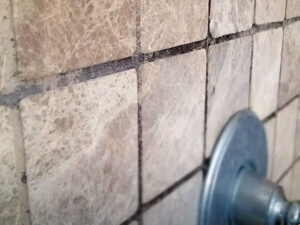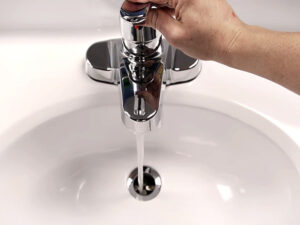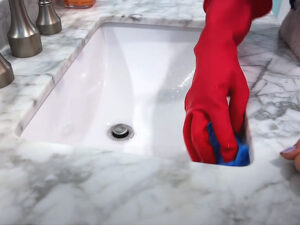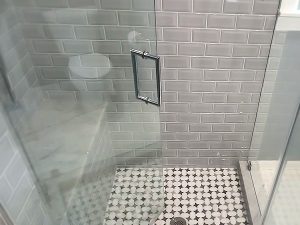You’re in your bathroom brushing your teeth when you notice water around the sink. You start to feel scared when you see that the overflow drain is jammed. Dealing with a clogged bathroom sink overflow pipe can be annoying and messy, but don’t worry—I’m here to tell you what I’ve learned from my own experience and help you clean it.
In this blog post, I’ll show you step-by-step how to clean a bathroom sink’s overflow pipe properly. We’ll talk about the tools you’ll need, the most common reasons why drains get clogged, and the best ways to clear them out. By the end, you’ll know enough and feel confident enough to face this water problem head-on.
How to Clean the Overflow Pipe of a Bathroom Sink
For a clean and nice bathroom experience, it’s important to keep the sink clean and working. One part of the sink that is often forgotten is the overflow pipe, which can get dirty and even grow mold over time. To keep the overflow pipe from getting clogged and to keep drains working well, it must be cleaned regularly. In this guide, we’ll show you step-by-step how to clean an overflow pipe on a kitchen sink.
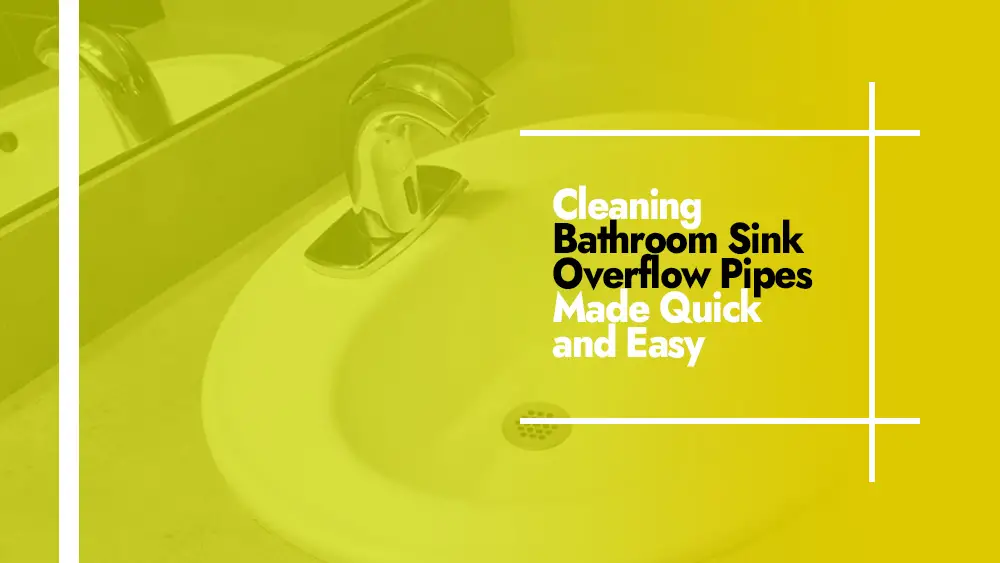
Step 1: Get the things you need
Before you start to clean the overflow pipe of the bathroom sink, you’ll need the following:
- Rubber gloves
- Safety goggles
- A brush for cleaning that has stiff bristles
- Pipe cleaner or small wire brush
- Bleach or vinegar
- Hot water
- Rags or towels
Step 2: Prepare the area
Clear the area around the bathroom sink and put towels or rags under the sink to catch any drips or spills. This will keep your table or cabinet from getting broken while you are cleaning.
Step 3: Put on safety gear
Put on rubber gloves and safety masks to protect yourself from splashes or getting chemicals in your eyes. These will keep your hands and eyes safe while you are cleaning.
Step 4: Remove any trash that can be seen
Check the overflow hole in the sink and remove any hair, soap scum, or other waste that you can see. Use your fingers or a small brush to gently move the stuff out of the way and throw it away.
Step 5: Mix a cleaning mix
In a small bowl or container, mix equal amounts of vinegar and hot water to make a cleaner. You can also use a bleach solution that has been watered down. Both bleach and vinegar work well to kill germs and get rid of mold or mildew.
Step 6: Clean the outside of the overflow pipe
Use a stiff-bristled cleaning brush to scrub the outside of the overflow pipe with the cleaning solution. Pay close attention to any spots or marks that you can see. Move the brush around in a circle to get dirt and grime off the surface. Rinse the brush in the cleaning solution often to keep it working well.
Step 7: Clean the inside of the overflow pipe
Put a small wire brush or pipe cleaner through the overflow hole and scrub the inside of the pipe gently. Move the brush back and forth to get rid of any dirt, mold, or mildew that has built up. If you need to, you can dip the brush in the cleaning solution to make it work better. Keep scrubbing until the overflow pipe looks clean and free of dirt on the inside.
Step 8: Rinse and dry the overflow pipe
Once the outside and inside of the overflow pipe have been cleaned well, rinse it with clean water. Use a wet cloth or sponge to wipe away any cleaning solution that is still on the surface. Let the overflow pipe dry all the way out before putting the sink back together.
By using the recommended tools and following these step-by-step steps, you can make sure that your bathroom sink is clean and working. Regularly cleaning the overflow pipe will help keep your bathroom’s drains working well and keep them from getting smelly or backed up.
Why Do Bathroom Sink Overflow Pipes Often Get Clogged?
The overflow pipes in a bathroom sink are very important because they keep water from spilling out onto the table or floor if the sink gets too full. But sometimes these lines can get clogged, which can cause drainage problems and even water damage. If you know what causes clogs in bathroom sink overflow lines, you can keep them from happening and keep your sink working well.
Hair
Hair is a big reason why bathroom sink overflow pipes get clogged. It’s easy for hair to get washed down the drain, where it can build up and cause a blockage. Over time, this can slow the flow of water and cause clogs.
Soap Scum
When the sink is used a lot, soap residue and scum can build up in the overflow pipe. As soap scum builds up, it can mix with other debris and make a clog that is hard to get rid of.
Toothpaste and floss for your teeth
Even though toothpaste and dental floss may seem safe, they can cause clogs if they are flushed down the drain. The problem is made worse by dental floss, which can get tangled up with other waste and form a solid blockage.
Deposits of minerals
Minerals can build up in the overflow pipe if the water is hard. Over time, these crystals can build up, making the pipe smaller and making it harder for water to flow through.
Small Objects
Small things like earrings, rings, or bottle caps that get dropped down the sink by accident can clog the overflow pipe. These things can get stuck in the pipe and make it hard for water to drain.
Mildew and mold
Mold and mildew can grow well in a bathroom that has a lot of moisture. Mold and mildew can grow in the overflow pipe if nothing is done to stop it. This can cause jams and bad smells.
Improper Installation
Some clogs in the overflow pipes of bathroom sinks can be caused by bad fitting. If the pipe isn’t lined up right or has holes or leaks, it can trap dirt and stop water from going through.
Regular upkeep is the only way to keep bathroom sink overflow pipes from getting clogged. Avoid putting hair, dental floss, and small items down the sink. Cleaning the pipe regularly with the right cleaners can also help keep it clean and working well. Also, putting up a mesh screen or drain cover can stop dirt from getting into the pipe and causing clogs.
Tips for Keeping Bathroom Sink Overflow Pipes in Good Shape
For proper draining and to avoid clogs, it’s important to keep your bathroom sink overflow pipes clean and working. By doing preventive maintenance, you can avoid plumbing problems and make sure that your sink runs smoothly. Here are some tips to help you keep your bathroom sink overflow lines in good shape and avoid problems.
Regular Cleaning
Make it a habit to clean the overflow lines in your bathroom sink every so often. This helps get rid of any hair, soap scum, or toothpaste that has built up and could cause a clog. Scrub the inside of the overflow pipe gently with a small wire brush or pipe cleaner. Also, use a cleaning brush with stiff bristles to clean the outside of the pipe. You can clean better with a solution of vinegar and water or a solution of light bleach.
Don’t Flush Debris
Be careful about what you put down the drain of your sink. Don’t flush things down the toilet that are too big, like hair, dental floss, or small items. These things can get stuck in the overflow pipe and make it hard for water to move. You might want to use a drain cover or mesh to catch any loose trash before it goes down the drain.
Use a Drain Strainer
Put a drain strainer or screen in your sink to stop larger objects from going down the drain by chance. With a drain filter, hair, soap chunks, and other things won’t be able to get into the overflow pipe and cause clogs. Make sure to clean the filter often so that it works well.
Use Hot Water to Flush
Once a month, run hot water through the overflow pipe of your kitchen sink. Grease, soap scum, or other things that have built up inside the pipe can be washed away with hot water. Just pour a few minutes worth of hot water down the sink drain to clear out the pipe.
Use Cleaners With Enzymes
You might want to use enzyme-based drain cleaners once a month to help break down biological materials that can build up in the overflow pipe. These cleaners are good at getting rid of hair, soap scum, and other things that build up and cause clogs. Follow the directions from the maker for how to use it right.
Check for Leaks
Check for leaks around the overflow pipe of the bathroom sink every so often. Check for water marks, mold, or mildew, which could be signs of a pipe leak. If you see any leaks, fix them right away so you don’t cause more damage or jams.
Avoid Harsh Chemicals
It’s important to keep your overflow lines clean, but you shouldn’t use harsh chemicals or cleaners that are too rough. Over time, these things can hurt the lines or eat away at their surfaces. Stick to gentle cleaners like vinegar and water or products that use enzymes.
Educate Your Family
Make sure everyone in your family knows how important it is to use the sink correctly and keep it in good shape. Encourage them to not put trash down the toilet or sink, to clean up any spills right away, and to tell you or a professional plumber about any plumbing problems or slow draining.
Know When to Replace
Over time, the overflow lines in your bathroom sink may wear down or get broken. If the overflow line has a lot of corrosion, cracks, or leaks that can’t be fixed, you might want to replace it. Talk to a professional plumber for advice and help when picking out and putting in a new pipe.
By keeping your bathroom sink overflow lines in good shape with these preventive maintenance tips, you can avoid clogs and other plumbing problems. Regular cleaning, the right way to use the sink, and keeping an eye on it will help it work well and make your time in the bathroom easier.
Alternative Methods for Cleaning Bathroom Sink Overflow Pipes
You can clean the overflow pipes of your bathroom sink in a number of different ways besides using standard cleaning products. Common household items and natural solutions are used in these ways. Here are some other ways to clean your bathroom sink overflow lines and get rid of debris, dirt, and possible clogs.
Water at a Boil
Boiling water can be a quick and easy way to clean the overflow lines in your bathroom sink. Carefully pour hot water down the sink drain to help break up any debris and flush it away. This method is great for getting rid of greasy buildup.
Baking Soda and Vinegar
When you mix baking soda and vinegar, a foaming reaction happens that can help get dirt and other things out of the overflow pipes in your bathroom sink. Pour about 1/2 cup of baking soda down the drain to start. After that, add a half cup of vinegar. Give the mixture a few minutes to fizz and move through the pipes. Then, run hot water over it.
Hot water and salt
Salt can help get rid of smells and hard-to-remove gunk from the overflow lines in your bathroom sink. In a bowl or other container, mix salt and hot water until the salt melts. Pour the mix down the drain and wait a few minutes. Rinse with hot water to get rid of the dirt that has come loose.
Pipe Cleaner or Wire Hanger
You can clean out your bathroom sink’s overflow lines by hand if you have a flexible wire hanger or a pipe cleaner. Straighten the wire hanger or pipe cleaner and put it in the overflow hole. Twist and move the wire gently to get rid of any jams or buildup. Pull out the loose stuff and throw it away. Make sure you don’t scratch or hurt the lines as you do this.
Wet and Dry Vacuum
A wet/dry vacuum can be a powerful tool for cleaning out the overflow lines of your bathroom sink. Set the vacuum to pick up liquids and connect a narrow nozzle or hose extension. Put the tip or extension over the overflow hole to seal it. Turn on the vacuum to pull out any dirt or clogs that have built up in the lines.
Hydrogen Peroxide
Hydrogen peroxide is a natural cleaner that can help get rid of mold and bacteria in the overflow pipes of your bathroom sink. In a jar, mix equal amounts of hydrogen peroxide and water. Pour the mix down the drain and leave it for a few hours or overnight. Rinse with hot water to get rid of the mold and germs.
Lemon Juice
Lemon juice is a natural cleaner that also makes things smell fresh. Squeeze the juice of a fresh lemon into a jar and then pour it down the drain. Let it sit for about 30 minutes so any buildup or leftovers can break down. After that, rinse with hot water.
It’s important to keep in mind that non-commercial cleaning methods might not be as effective as commercial ones, especially for clogs that are hard to get rid of. If you have a serious or chronic clog, it’s best to call a plumber.
Be careful when using alternative methods, and make sure to take the right safety measures. Consult a professional plumber for advice and help if you don’t know how to do something or if the same thing keeps happening.
Final Words
Cleaning the overflow pipe of a bathroom sink is an important maintenance job to make sure it drains well and stops clogs. By doing the steps and using the tips in this guide, you can clean your bathroom sink’s overflow pipe and keep it working well. To keep the pipe free of debris and possible blockages, it’s important to clean it regularly, use the right cleaning tools, and take preventative steps.
Also, using natural and easy-to-find ways to clean the overflow pipe is a choice with alternative cleaning methods. By taking care of your bathroom sink overflow pipe and keeping it clean, you can have a sink that runs smoothly and a clean, healthy bathroom.




